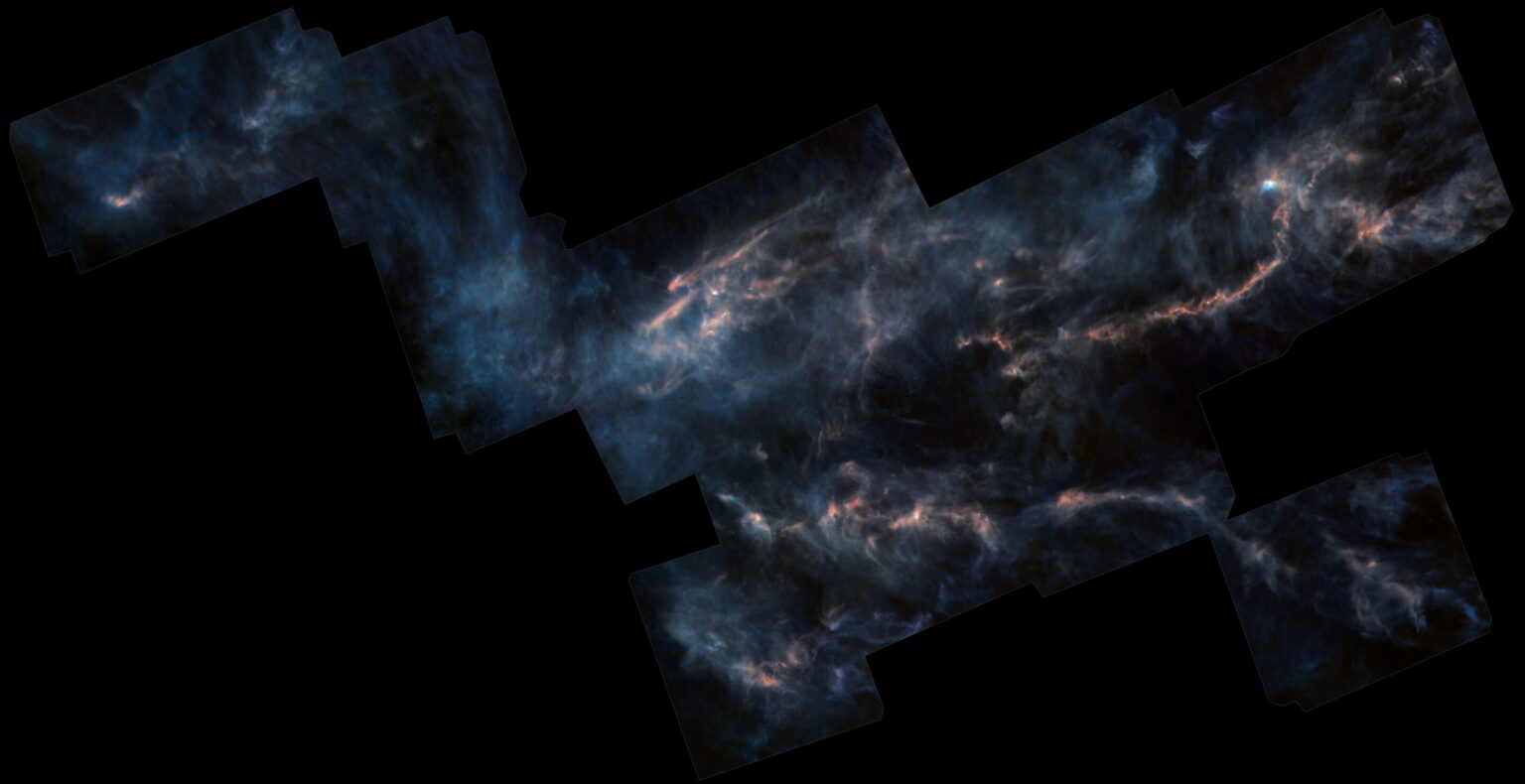Scientists have studied the chemical composition of a cold gas cloud in the constellation Taurus. They showed that relatively simple organic molecules could transform into more complex ones in it. In the future, they may become the basis for life on unborn planets.

Investigation of the chemical processes of interstellar clouds
Scientists from universities in the USA, the Netherlands, Germany and Switzerland have studied the chemical processes occurring inside cold interstellar clouds of gas. Stars and planets are subsequently formed from them, so there may be a mystery of the origin of life.
The researchers turned their attention to one of the largest “star nurseries”, which were located in the constellation Taurus. This cold interstellar cloud is called TMC-1 and is located 440 light-years away from us.
Researchers call such regions “accreting starless cores”. That is, the compression of matter under its weight has already begun here, but the first stars have not yet been born. Its temperature is -263 °C, which is only 10 degrees above absolute zero.
Organic molecules evolve in space
The attention of scientists was attracted by the fact that, despite such extremely low temperatures, there were very complex organic molecules, such as fulvenallene and 1- and 2-ethynylcyclopentadiene. These are compounds containing ring groups containing five carbon atoms. Scientists have tried to understand how they are formed.
They suggested that the evolution of organic molecules takes place in the gas-dust cloud, the starting point of which is ortho-benzyne. This is a cyclic compound, first detected as part of TMC-1 in 2021 using the Yebes radio telescope in Spain.
Scientists reproduced the conditions existing in cold gas-dust clouds and identified a number of substances using a synchrotron radiation source. They concluded that ortho-benzyne could easily combine with methyl radicals and formed more complex compounds even at low temperatures.
Or is life starting here?
Given the discovery of scientists, the fact that organic molecules experience evolution in gas-dust clouds is beyond doubt. However, researchers realize that the mechanism they discovered is only part of the complex processes taking place in outer space.
After all, in addition to these, there should be a bunch of other organic and inorganic reactions. Much later, when the first stars light up, and silicate matter forms the first planets, organic matter will fall on them with meteorites and give rise to a new life.
In the future, scientists plan to continue to investigate chemical reactions in gas-dust clouds. They hope to see if organic molecules will start capturing nitrogen atoms. This way can lead to cosmic evolution to the formation of amino acids. They are components of DNA.
According to phys.org
Follow us on Twitter to get the most interesting space news in time
https://twitter.com/ust_magazine
